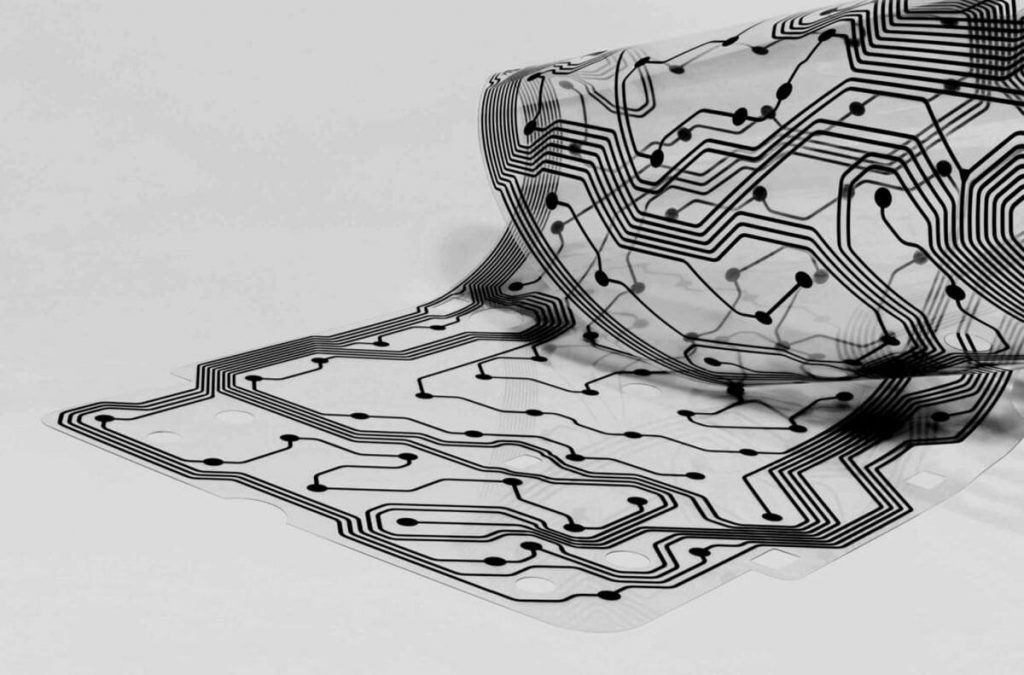Re-Fream partner AITEX develops new research on hybrid electronic solutions on textile substrate
The textile Research Institute from Valencia (SP) is part of HYBRID project, that will increase knowledge for the application of electronic inks with organic materials on flexible and stretchable substrates incorporating small silicon components.

Over the past few years, electronics have begun to shift from their traditional rigid and rectangular shapes to thinner, more complex form factors adapted to the shape of their location.In addition, in some cases flexible and even stretchable substrates are used which make it possible to a certain extent to be bent or even stretched.These new functionalities allow better integration in textile products, either to incorporate sensors, or to incorporate processing and communication elements.
These types of flexible solutions have undergone great advances in recent years with the appearance of specific materials for their use, such as conductive, resistive, dielectric, electroluminescent, or semiconductor inks.Through complex overlapping structures of these materials, with specific designs and patterns, it is possible to create tiny sensors or components for specific functions such as electrocardiogram (ECG) electrodes, electroencephalography (EEG) electrodes, pressure sensors, humidity sensors, temperature sensors or even small circuits.Its applications mainly with applications in energy, health or consumer electronics.
However, although flexible electronics manufacturing processes have greatly advanced, the level of integration or size reduction of circuits is limited by the technologies used.In this sense, traditional technologies such as silicon electronics, which have been with us for almost 60 years, have an advantageous position.This technology allows high levels of integration, which in addition to reducing size offers lower energy consumption in operation, as well as incorporating greater functionality.
Hybrid electronics come to combine the best of both worlds, on the one hand, flexibility and adaptability to the elements where it needs to be incorporated and, on the other hand, processing power and minimum energy consumption.In this sense, the HYBRID project aims to continue obtaining knowledge for the application of electronic inks with organic materials on flexible and stretchable substrates incorporating small silicon components.
To know more about the objectives and expected results of the project, see the full article on AITEX website.


